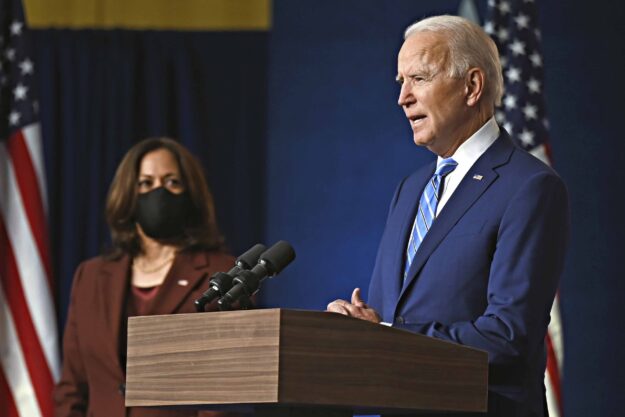This week, continuing the discussion on the trafficking of illicit drugs throughout the United States, I want to talk about how different administrations targeted different aspects of the problem, and had different plans to deal with the issues.
Starting with administration under President Donald Trump, he planned to counteract the drug trafficking issues by building his wall on the border. “The mercurial approach by his administration during the past four years has left anti-drug allies unmoored, provided political capital to presidents who undermined anti-corruption initiatives and squandered efforts to improve regional security by throwing resources at an ineffective border wall” (Business Insider). Trump used drug trafficking incidents of MS13 to build more anti-immigration policies and support his building of the wall on the border of Mexico and the United States. His “zero tolerance” policy at the border, that enforced the separation of families trying to cross, “further pushed people into the illegal market and the hands of criminal groups, helped raise the price for criminal services like human smuggling, increased the risk that deportees would enter the ranks of criminal groups and eroded trust between authorities and migrant communities exploited by criminal groups” (Business Insider). In September of 2020, Trump ordered that the Mexican government crack down and diminish efforts of the Mexican drug cartel, or otherwise face consequences. Consequences such as the Mexican administration under President Andrés Manuel López Obrador would run the risk of being found to have “failed demonstrably to uphold its international drug control commitments”(Business Insider). Many believe this deemed his efforts ineffective and deficient to solving the actual drug trafficking issue.

In January, the new President Joe Biden was inducted into office and administration. He is planning to handle the current drug trafficking issues with a different approach. According to an article put out by Brookings Edu, the incoming Biden administration should be “especially wary of the likely inevitable growth of fentanyl shipment through maritime areas and the potential for such organizations to use technology to engage in ‘gray zone’-like activities, which could make their trafficking operations even more effective” (Brookings). Fentanyl is one of the newer chemically-engineered drugs as discussed in my last civic blog post. In 2018 alone, 69,425 cases of fentanyl trafficking were reported to the United States sentencing commission (USSC). Fentanyl as well as synthetic opioids being trafficked can cause even more danger to society because it is not uncommon for people to be unaware that what they are buying contains any type of fentanyl or synthetic materials. Producers of the illicit drugs cut them with the synthetic chemicals to make more product for cheaper, and ultimately make more money. However, these synthetic drugs can be more dangerous and result in overdoses, some that can be fatal. According to the CDC, “deaths involving other synthetic opioids other than methadone (primarily fentanyl) continue to rise with more than 36,359 overdose deaths reported in 2019” (CDC).

Because of the growing production and distribution of fentanyl, and therefore rising death rates due to overdoses, the Biden administration should likely take that into consideration when dealing with drug trafficking policies, and might even considering prioritizing the trafficking of fentanyl as an imminent threat. According to Brookings research and opinions, “The new administration should likewise prioritize and bolster counter-TCO(transnational criminal organizations) intelligence support, consider advancing the use of U.S. cyber tools, and enhance the capabilities and capacity of the U.S. Coast Guard to help mitigate that threat”, with “that threat” being the “likely inevitable growth of fentanyl” (Brookings).
Although many believe this is how the Biden administration should attempt to take action, others do not seem to expect much change when it comes to drug trafficking under Biden. Although Biden may act on some changes advocated for by a Congress report in December, including a “’long-term, inter-agency’ counter-narcotics strategy that would involve greater funding for science-based treatment and prevention, more resources for the Treasury Department’s anti-money laundering efforts, a new drug certification and designation process, and a data-driven overhaul of the metrics for combating drug trafficking and money laundering”, most think he is most likely to stay on track with “what has prevailed during most of his career”, which has failed to curb United States drug consumption or trafficking throughout the states (Americas Quarterly). According to the chair of the commission that put together that Congress report, we should expect the Biden administration to focus more on the “citizen security and fighting transnational criminal organizations versus interdicting drugs and focusing on drug trafficking alone” (Americas Quarterly).

Regardless of whether the Biden administration is able to focus on making the changes needed to halt the spreading drug trafficking throughout the country and the rising fentanyl production, it continues to be a civic issue and has people in society dying. It is an issue that, if goes untouched, will continue to rise and get out of control according to studies and trends mentioned previously in above paragraphs. If people are being affected enough for a report suggesting changes be made to United States policies, it is enough of a civic issue and threat to society to need to be reformed.
Resources
https://www.ussc.gov/sites/default/files/pdf/research-and-publications/quick-facts/Fentanyl_FY18.pdf
https://www.drugabuse.gov/drug-topics/trends-statistics/overdose-death-rates